 W
WAbuyama Kofun is a Kofun that is located in Takatsuki and Ibaraki, Osaka in Japan. The Kofun was designated a National Historic Site of Japan in 1983.
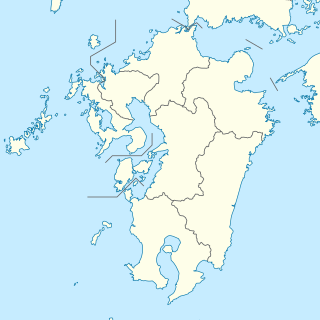 W
WAmakusa Nada is a sea area extending to the west of Shimoshima Island, Amakusa in Japan.
 W
WArioka Kofun Cluster is a Kofun Cluster that is located in Zentsūji, Kagawa in Japan. The Kofun Cluster was designated a National Historic Site of Japan in 1984.
 W
WFollowing torrential rainfall, a landslide was triggered which swept through the Izusan neighbourhood of Atami, Shizuoka Prefecture, Japan on 3 July 2021. Nineteen people died during the landslide and nine went missing. The city received 310 millimetres (12.4 in) of rainfall in a 48-hour period, which prompted authorities to warn residents of "life threatening" conditions. The landslide destroyed a number of houses and left roads covered with debris. Search and rescue operations were underway as of 3 July, with local authorities reporting that they had received approximately ten phone calls from people trapped in their houses.
 W
WCat Street is an approximately half-mile street in Tokyo, Japan. The street meanders within Harajuku and Shibuya.
 W
WGodzilla Street is a street named after Godzilla in Kabukichō, Shinjuku, Tokyo, Japan.
 W
WHarunotsuji Site is an archaeological site of the Yayoi period that is located in Iki, Nagasaki in Japan. It is designated as a national special historic site. In addition, the artifacts excavated from this site are designated as national Important Cultural Property.
 W
WHassō-an (八窓庵) is a historic chashitsu located today in Sapporo, Hokkaido, northern Japan. The name means “eight-window tea house”.
 W
WHatoba Park (はとば公園) is a park along the Sumida River, northeast of Kachidoki Bridge, in Chūō, Tokyo, Japan.
 W
WHenohenomoheji (へのへのもへじ) or hehenonomoheji (へへののもへじ) is a face known to be drawn by Japanese schoolchildren using hiragana characters.
 W
WHoraisan, or horaijima, are terms used to refer to an inaccessible island that generally is part of a Japanese garden, and are often translated as "Treasure Mountain" or "Treasure Island", respectively. The name comes from Horai, a Chinese island important in Japanese mythology.
 W
WIchisuka Kofun Cluster is a Kofun Cluster that is located in Kanan, Osaka in Japan. The Kofun Cluster was designated a National Historic Site of Japan in 1994.
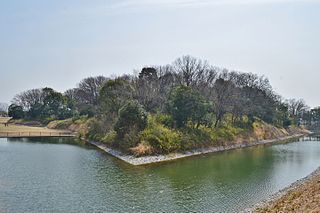 W
WImashirozuka Kofun is a Kofun that is located in Takatsuki, Osaka in Japan. The Kofun was designated a National Historic Site of Japan.
 W
WMatsushita IMP Hall is a multi-purpose venue located on the second floor of the Matsushita IMP Building, in Osaka, Japan. It has a floor area of 642.96m2 and 857 movable seats. It has hosted many notable international touring artists, such as Morrissey, Night Ranger, Alice Cooper, My Chemical Romance, Linkin Park, Cheap Trick, Kansas, Iron Maiden, UFO, Green Day, Rage Against the Machine and Björk.
 W
WThe Imperial Court in Kyoto was the nominal ruling government of Japan from 794 AD until the Meiji period (1868–1912), after which the court was moved from Kyoto to Tokyo and integrated into the Meiji government. The shogunate system came after the Imperial Court, with Minamoto no Yoritomo being the first to establish the post of the shōgun as hereditary, in 1192.
 W
WIsshōmasu Site is an archaeological site that is located in Kamakura, Kanagawa Prefecture. The site was designated a National Historic Site of Japan in 2007. It is a Kamakura period earthworks beside the road, half a kilometre from Gokuraku-ji.
 W
WIwase-Senzuka Kofun Cluster is a Kofun Cluster that is located in Wakayama, Japan. It consists of more than 600 of Kofuns. It is designated as a National Special Historic Site.
 W
WJapan and the Republic of San Marino formally established diplomatic relations in 1996. However, visits of Japanese and Sammarinese officials to each other's countries had occurred since the 1950s, with an honorary consulate of San Marino being established in Japan in 1961, later raised to honorary consulate general in 1998.
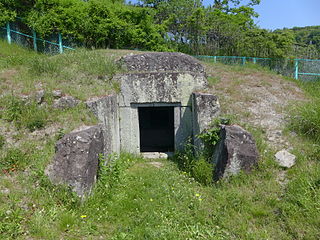 W
WKannonzuka Kofun is a Kofun that is located in Habikino, Osaka in Japan. The Kofun was designated a National Historic Site of Japan in 1981.
 W
WKatusrao Castle ) is the remains of a castle structure in Sakaki, Nagano Prefecture, Japan. It is located on a 816 meter mountain. The castle was a main bastion of the Murakami clan.
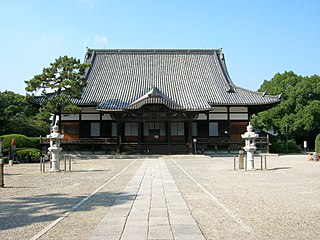 W
WKenchū-ji (建中寺) is a Jōdo-shū Buddhist temple in Tsutsui, Higashi-ku, Nagoya, central Japan. Starting in the Edo period, the mausoleums of the lords of the Owari Domain were located there, making it the Bodaiji of the Owari Tokugawa family.
 W
WKatsuobushi kezuriki is a traditional Japanese kitchen utensil, similar to a wood plane or mandoline. It is used to shave katsuobushi, dried blocks of skipjack tuna (katsuo).
 W
WMiiri-Takamatsu Castle ) is the remains of a castle structure in Asakita-ku, Hiroshima Prefecture, Japan. It is located on a 339 meter mountain. One of the 18 Generals of Mōri, Kumagai Nobunao was commandr of the castle.
 W
WMikito Takayasu was a Japanese ophthalmologist known for his discovery of Takayasu's arteritis.
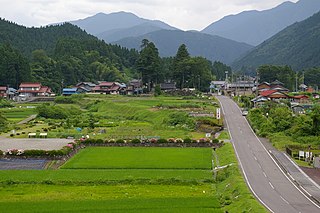 W
WNeodani Fault is a left lateral slip fault in central Japan, Gifu Prefecture, which ruptured causing the 1891 Mino–Owari earthquake in 1891. It caused a 6m vertical offset and 8m left lateral offset, and ruptured over 80 km. The quake was the largest ever recorded in inland Japan.
 W
WNinenzaka, or Ninen-zaka, is an ancient 150m stone-paved pedestrian road and tourist attraction in Higashiyama-ku, Kyoto, Japan. The road is lined with traditional buildings and shops, and is often paired with the similar road, Sannenzaka.
 W
WPocky & Pretz Day is a Japanese marketing event that occurs on 11 November each year. The event uses the Ezaki Glico products Pocky and Pretz, which are both long and thin biscuits, to represent the repeated number 1 in the numerical date. Ezaki Glico has deployed an advertising campaign surrounding the date each year since 1999. Pocky & Pretz Day has been certified as a memorial day by the Japan Anniversary Association .
 W
WIn Japan, like in most other countries, propaganda has been a significant phenoman during the 20th century.
 W
WRokusō-an is a chashitsu.
 W
WThe Saitama Prefectural Assembly is the prefectural parliament of Saitama Prefecture.
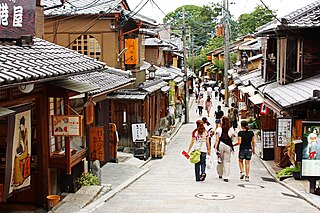 W
WSannenzaka, or Sannen-zaka, is a stone-paved pedestrian road and tourist attraction in Higashiyama-ku, Kyoto, Japan. The road is lined with traditional buildings and shops, and is often paired with the similar road, Ninenzaka.
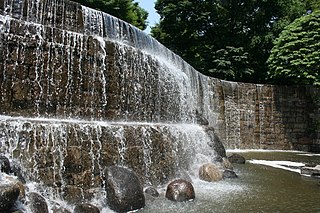 W
WShinjuku Niagara Falls is a fountain in Tokyo's Shinjuku Central Park, in Shinjuku, Japan. The Tokyo Weekender has described the water feature as "generously named".
 W
WShiokaze Park is a public park and was a temporary beach volleyball sport venue for the 2020 Summer Olympics, located in Tokyo, Japan.
 W
WIn Japan, sound trucks, vehicles equipped with a public address system, are used by political parties and candidates to express their views. Vendors also use sound trucks for the purpose of selling goods, collecting recyclable materials, and other purposes. The trucks have one or more loudspeakers which play a recorded message or recorded music as the truck tours through neighborhoods.
 W
WAkindo Sushiro, is a Japanese multinational conveyor belt sushi specialty store. It is headquartered in Suita, Osaka.
 W
WSuyama Kofun is a Kofun that is located in Kōryō, Nara of Japan. It is designated as a national Special Historic Site.
 W
WSymbol Promenade Park is a park in Odaiba, Tokyo, Japan. The park opened in 1996.
 W
WThe Wadakura Bridge is a bridge in Chiyoda, Tokyo.
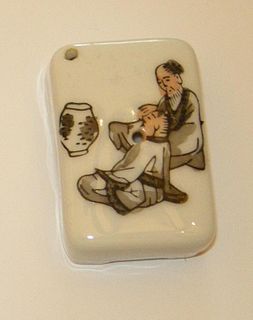 W
WA water-dropper is a small device used in East Asian calligraphy as a container designed to hold a small amount of water. In order to make ink a few drops of water are dropped onto the surface of an inkstone. By grinding an inkstick into this water on the inkstone, particles come off and mix with the water, forming ink.
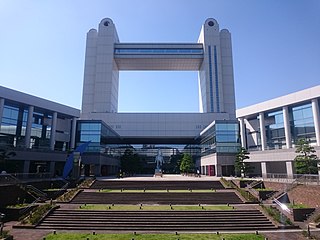 W
WThe World Design Exhibition 1989, also abbreviated "DesignHaku", was an event held at the Nagoya Congress Center July 15 - November 26, 1989. It was hosted by the World Design Organization. Other venues included Nagoya Castle and Nagoya Port.
 W
WThe X-Seed 4000 was a concept megatall skyscraper. The idea was initially created and developed by Martin Pascoe. Its proposed 4-kilometre (2.5 mi) height, 6-kilometre-wide (3.7 mi) sea-base, and 800-floor capacity could accommodate 500,000 to 1,000,000 inhabitants. This structure would be composed of over 3,000,000 tons of steel.